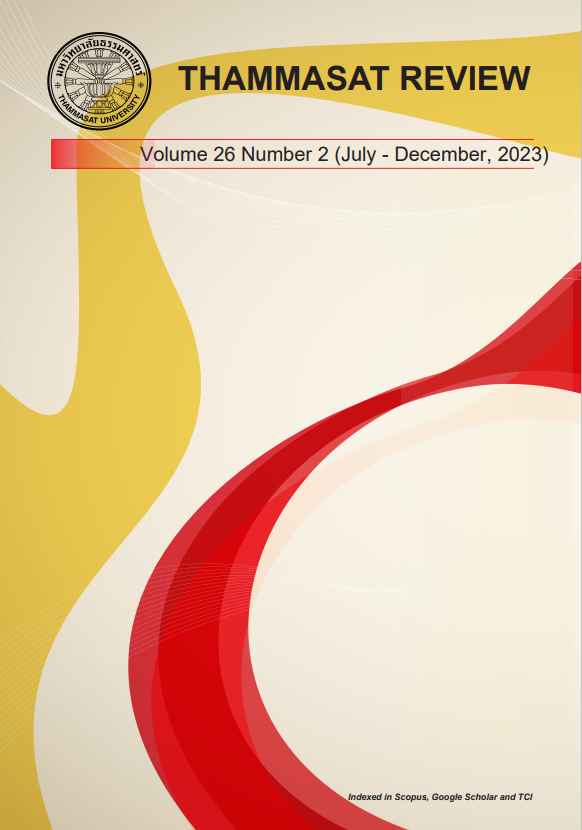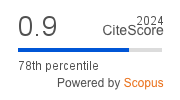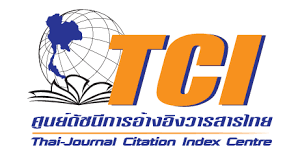Dispute Settlement Mechanism for Economic Conflicts in ASEAN
Keywords:
ASEAN, Thailand, Dispute Settlement Mechanism, EconomicAbstract
The institutional configuration of ASEAN has been perceived for its uniqueness in which the member states have not been willing to sacrifice their sovereignty to the regional organization. One of ASEAN’s key elements that help illustrate the organization’s lack of resolve in realizing its regionalist institution in accordance with the supranational form is the Dispute Settlement Mechanism (DSM). Over the past two decades, the DSM has evolved from a traditional, diplomacy-based to a rule-based system. However, the practice and implementation within ASEAN have demonstrated a certain degree of reluctance.
This article primarily focuses on the uniqueness nature of the Dispute Settlement Mechanism within ASEAN. By exploring its evolution and its viability to settle dispute among ASEAN members with a particular emphasis on the initial phase of DSM development leading up to the 2004 Enhanced Dispute Settlement Mechanism (EDSM). Four key challenges are identified through this exploration: ASEAN's exclusive jurisdiction and the issue of forum shopping, the impracticality of the EDSM, funding constraints, and the influence of the ASEAN Way. This analysis aims to provide a comprehensive understanding of ASEAN’s distinct institutional configuration through the cases of economic conflicts.
References
Anthony, M. C. (1998). Mechanism of Dispute Settlement : The ASEAN Experience. Contemporary Southeast Asia, 20(1), 38-66.
ASEANSecretariat. (2018a). Agreement on the Promotion and Protection of Investment 1987. https://www.google.com/search?ei=exkTXKGWC4nGvQSp1LO4Ag&q=Agreement+for+the+Promotion+and+Protection+of+Investments+1987&oq=Agreement+for+the+Promotion+and+Protection+of+Investments+1987&gs_l=psy-ab.3..0i22i30.2966.3952..4265. 0.0..0.218.817.1j2j2......0....1..gws-wiz.d3xMTOJI54A
ASEANSecretariat. (2018b). ASEAN Protocol on Enhanced Dispue Settlement Mechanism. https://investmentpolicyhub.unctad.org/Download/TreatyFile/2909
BusinessWorld. (2003, March 10 2003). Singapore,Thailand seek Compensation from Government Following Decision to Exempt Petrochem Industry. Business World.
Chiou, Y. H. (2010). A Two Level games Analysisi of AFTA Agreements: What Caused ASEAN States to Move Towards Economic Integration? Journal of Current Southeast Asian Affairs, 29(1), 55-99.
Chow, M.E. and Tan, H. (2013). The Role of the Rule of Law in ASEAN Integration. EUI Working Paper RSCAS 2013/16. http://cadmus.eui.eu/bitstream/handle/1814/ 26452/RSCAS_2013_16.pdf?sequence=1&isAllowed=y
Kaplan, J. A. (1996). ASEAN's RubiconA Dispute Settlement Mechanism for AFTA. UCLA Pacific Basin Law Journal, 14(2).
Koesrianti. (2015). Rule based Dispute Settlement Mechanism for ASEAN Economic Community: Does ASEAN Have It?
Kraichitti, K. (2015). Dispute Settlement Mechanism for ASEAN Community: Experienes, Chllenges and Way Forward. Paper presented at the ASEAN Law Association 12h General Assembly, Manila.
Nattapat, L. (2016). The Deadlock of ASEAN Dispute Settlement Mechanism and Why ASEAN Cannot Unlock It? RSUIJCG, 3(1).
Sandhu, N. (2016). "Member Participation in The World Dispute Settlement System: Can Developing Countries Afford Not to Participate", UCL Journal of Law and Jurisprudence, 5(1), p. 146-174.
Shah, S. (2017). The ASEAN Enhanced Disputes Settlement Mechanism (EDSM): Functional for Economic Growth for Protecting ational Sovereignty? http://asc. fisipol.ugm.ac.id/asean-enhanced-disputes-settlement-mechanism-edsm-functional-economic-growth-protecting-national-sovereignty/
Sunida, A. (2014), “ASEAN Way Lae Konkai Yuti Kohpipat Thang Setakij,” [ASEAN Way and Dispute Settlement Mechanism on Economics], Rattasat Sarn [Journal of Political Science], 35, p. 136-173.
Sunida, A. (2020), "Contending Eurocentric Theories: The Case Study of Thailand's Economic Regionalism in ASEAN", Asian Journal of Political Science, 28(2), p.164-191.
Sunida, A. (2022), "Inadequate or Unfit: The Development of Economic Dispute Settlement Mechanism in ASEAN," AIU Review. (in Japanese).
Taylor, O. N. (2002). Dispute Settement Mechanism on Economic Conflicts. Northwestern Journal International Law & Business, 22(13).
Vasmatkar, A., & Ronald, B. (2007). Dispute settlement Under ASEAN and the WTO: A Comparative Analysis. Journal of Legal Studies and Research, 3(1).
Vergano, P. R. (2009, 30th November 2009). The ASEAN Dispute Settlement Mechanism and its Role in a Rules Based Community: Overview and Critical Comparison. Paper presented at the Asian International Economic Law Network Inaugural Conference.
Woon, W. (2012). Dispute Settlement the ASEAN Way. National University of Singapore. Singapore. https://www.google.com/search?q=walter+woon+dispute+settlement +the+asean+way&oq=walter+woon+dispute+settlement+the+asean+way&aqs=chrome..69i57.12312j0j7&sourceid=chrome&ie=UTF-8
WTO. (2018a). Dispute Settlement Understanding: Article 23 Strengthening of the Multilateral System. Retrieved from https://www.wto.org/english/docs_e/legal_e/28-dsu_e.htm
WTO. (2018b). Disputes: Singapore Vs. Malaysia (DS1). https://www.wto.org/english/ tratop_e/dispu_e/cases_e/DS1_e.htm
WTO. (2018c). Disputes: The Philippines vs. Thailand (DS371). https://www.wto.org/ english/tratop_e/dispu_e/cases_e/DS371_e.htm
WTO. (2018d). Disputes: Vietnam vs. Indonesia (DS496). https://www.wto.org/english/tratop _e/dispu_e/cases_e/DS496_e.htm
Downloads
Published
How to Cite
Issue
Section
License
Copyright (c) 2023 Thammasat Review

This work is licensed under a Creative Commons Attribution-NonCommercial-NoDerivatives 4.0 International License.
The opinions and ideas expressed in all submissions published in Thammasat Review are solely that of the author(s) and do not necessarily reflect that of the editors or the editorial board.
The copyright of all articles including all written content and illustrations belong to Thammasat Review. Any individuals or organisation wishing to publish, reproduce and distribute a particular manuscript must seek permission from the journal first.








